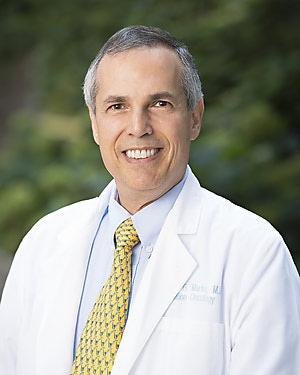
Credit: UNC Health
CHAPEL HILL, North Carolina–A comprehensive review by University of North Carolina researchers and colleagues highlights the optimal ways that focused, high-dose radiation can be delivered to various types of tumors while sparing normal tissue and mitigating long-term side effects. The review was reported as a special issue in the International Journal of Radiation Oncology, Biology, Physics on May 1, 2021.
This analysis was based on an exhaustive review of data and the literature published largely in the past decade. It updates an earlier review that primarily focused on the effects of conventional radiation therapy on normal tissue. This new review also includes important analyses of how well high-dose radiation can destroy small tumors, such as small brain lesions, lung lesions, and cancers that metastasize to other parts of the body.
“We undertook this review because we have an ever-increasing knowledge about the dose and volume of tissue to which we can direct radiation to both eradicate tumors while also safeguarding the surrounding normal tissue,” said Lawrence B. Marks, MD, chair of the UNC Department of Radiation Oncology and Dr. Sidney K. Simon Distinguished Professor of Oncology Research at UNC Lineberger Comprehensive Cancer Center. “Today, we are better able to tailor radiotherapy to optimize benefit and minimize risk.”
Conventional radiotherapy, developed nearly a century ago, often broadly hits the tumor and some healthy tissue surrounding the tumor, and is administered in low daily doses, usually over many weeks. For some patients, their cancer can be treated with more advanced techniques, called stereotactic body radiation therapy, or radiosurgery, that target smaller areas of tissue that are primarily cancerous, treating them at a high dose per day and usually administered for one to five days. These radiosurgery treatments are the focus of this recently published report.
Marks said UNC is a leader in radiosurgery treatments. “We are lucky to have specialized equipment and expertise to deliver these types of treatments.” He added that UNC’s multidisciplinary approach to cancer care brings together clinical collaborators to work in partnership with radiosurgery program to care for a wide range of cancers, including brain, thoracic, gastrointestinal and genitourinary cancers.
“New computational methods and machines allow us to deliver radiotherapy much more accurately today, allowing us to limit the area where the radiation is targeted, thereby giving us the ability to increase the dose per day,” Marks said. “However, at this point in time we can only use this approach for smallish-sized tumors, but newer techniques may allow us to extend this approach to larger tumors as well.”
Because it takes years for data to accrue and mature, the next review will be done when there are discernable shifts or changes in treatment practice patterns, according to the authors. However, there is a large review due out next year, in which Marks is participating, that is focusing on use of radiotherapy in pediatric cancers. Radiotherapy is often used sparingly in children due to later-in-life side effects, therefore making it important to know when best to use these treatments.
“Radiation therapy is now safer than ever. Our analysis will help support the growing use of the latest forms of radiotherapy, which are proving to be a very effective in treating many primary and metastatic lesions,” Marks concluded.
###
In addition to Marks, the other authors from UNC include Shiva Das, PhD, Nathan Sheets, MD, Panayiotis Mavroidis, PhD, DABR, and Trevor Royce, MD, MPH. Other members of Marks’ steering committee include Jimm Grimm, PhD, Geisinger Cancer Institute, Danville, PA, and Thomas Jefferson University, Philadelphia; Andrew Jackson, PhD, and Ellen Yorke, PhD, Memorial Sloan-Kettering Cancer Center, New York; Brian D. Kavanagh, MD, University of Colorado School of Medicine, Aurora, CO; and Jinyu Xue, PhD, NYU Langone Medical Center, New York.
Media Contact
Bill Schaller
[email protected]
Related Journal Article
http://dx.




